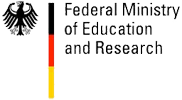| Foto | First Name | Last Name | Position |
|---|---|---|---|
 |
Vera | Demberg | Cognitive Models of Human Language Processing and their Application to Dialogue Systems |
 |
Elmar | Eisemann | Computer Graphics and Visualization |
 |
Markus | Flierl | Visual Sensor Networks |
 |
Markus | Flierl | Visual Sensor Networks |
 |
Stefan | Funke | Geometry-Guided Design and Analysis of Wireless Sensor Networks |
 |
Stefan | Funke | Geometry-Guided Design and Analysis of Wireless Sensor Networks |
 |
Joachim | Giesen | Learning of Geometry: Given samples obtained from a shape we want to learn some of its geometric and topological characteristics. A popular example that fits in this framework is surface reconstruction: to obtain a digital model of some solid one samples |
 |
Joachim | Giesen | Learning of Geometry |
 |
Stefan | Gumhold | 3D Animation Processing |
 |
Stefan | Gumhold | 3D Animation Processing |
Researcher
 |
Dr. Michael Zollhöfer |
Visual Computing, Deep Learning and Optimization
| Name of Research Group: | Visual Computing, Deep Learning and Optimization |
| Homepage Research Group: | web.stanford.edu/~zollhoef |
| Personal Homepage: | zollhoefer.com |
| Mentor Saarbrücken: | Hans-Peter Seidel |
| Mentor Stanford: | Pat Hanrahan |
| Research Mission: | The primary focus of my research is to teach computers to reconstruct and analyze our world at frame rate based on visual input. The extracted knowledge is the foundation for a broad range of applications not only in visual effects, computer animation, autonomous driving and man-machine interaction, but is also essential in other related fields such as medicine and biomechanics. Especially, with the increasing popularity of virtual, augmented and mixed reality, there comes a rising demand for real-time low latency solutions to the underlying core problems. My research tackles these challenges based on novel mathematical models and algorithms that enable computers to first reconstruct and subsequently analyze our world. The main focus is on fast and robust algorithms that approach the underlying reconstruction and machine learning problems for static as well as dynamic scenes. To this end, I develop key technology to invert the image formation models of computer graphics based on data-parallel optimization and state-of-the-art deep learning techniques. The extraction of 3D and 4D information from visual data is highly challenging and under-constraint, since image formation convolves multiple physical dimensions into flat color measurements. 3D and 4D reconstruction at real-time rates poses additional challenges, since it involves the solution of unique challenges at the intersection of multiple important research fields, namely computer graphics, computer vision, machine learning, optimization, and high-performance computing. However, a solution to these problems provides strong cues for the extraction of higher-order semantic knowledge. It is incredibly important to solve the underlying core problems, since this will have high impact in multiple important research fields and provide key technological insights that have the potential to transform the visual computing industry. In summer 2019 Michael Zollhöfer joined Facebook. |
Researcher
- Name of Researcher
- Klaus Hildebrandt
- Homepage of Research Group
- First Name
- Klaus
- Last Name
- Hildebrandt
- Foto

- Homepage
- Phone
- Position
- Applies Geometry
- Mentor in Saarbruecken
- Hans-Peter Seidel
- Mentor in Stanford
- Categories
- Former Groups
- Research Mission
- Advances in scanning and sensing technologies within the last decade have enabled the creation of complex digital models from real-world objects. The field of geometry processing concerns the representation, analysis, manipulation, and optimization of the resulting geometric data. The findings in this field are of importance for many industrial applications, for example in the automotive industry and architecture. Fundamental to geometry processing is an understanding of geometric properties of the shapes to be processed. Since these are discrete and not smooth manifolds, they lie out of the realm of classical differential geometry. Discrete differential geometry develops notions and concepts that describe geometric properties of discrete manifolds in analogy to the smooth theory. Concepts developed in this field form a basis for many algorithms in geometry processing. One line of our research focuses on the construction of discrete differential operators and discrete curvatures on polyhedral surfaces and the study of their convergence properties. A second line aims at developing computational models and efficient algorithms for problems in geometry processing and other areas of visual computing, including surface modeling, fairing and denoising, shape analysis, feature detection, real-time simulation of deformable objects, and control of physical trajectories. Since April 2015 Klaus Hildebrandt holds a faculty position in the Computer Graphics and Visualization department at the University of Delft, Netherlands.
- mission_rtf
- Name of Research Group
Personal Info
- Photo

- Website, Blog or Social Media Link



